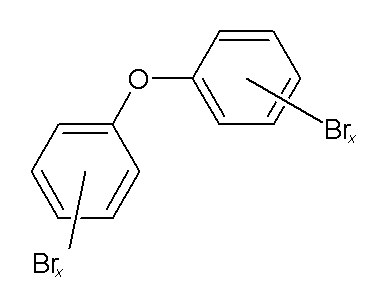Flame retardant compounds known as polybrominated diphenyl ethers (PBDEs) have been detected in foodstuffs taken straight from supermarket shelves by US and German researchers. Their findings suggest that the food we eat may be a key source for contamination with these toxic materials around the world.
Environmental health expert Arnold Schecter of the University of Texas’ School of Public Health in Dallas and colleagues at ERGO Research, in Hamburg, Germany, the University of North Carolina, Chapel Hill, and at the US Environmental Protection Agency, in North Carolina, report in the September issue of Environmental Science & Technology how they have found that the levels of PBDEs in foods are much higher than those seen in similar market studies outside the USA.

Food around the world could be contaminated with flame retardants (Photo by David Bradley)
PBDEs are widely used as flame-retardant additives in the electronics industry and in the polyurethane foams used in carpeting, upholstery, and mattresses. They play a crucial role in reducing the serious risk of fire seen with such products if left untreated. However, there are concerns about the effects on human health of PBDEs, which have been detected in people across the globe. Little is known about the specific toxic effects of brominated flame retardants. However, their increasing presence in human tissue samples is cause for concern because they have been associated with cancer, endocrine disruption and impaired brain development in animal studies, explains Schecter. There is no human data on their health effects but cancer, endocrine disruption, nervous system alterations, reproductive and developmental pathology, thyroid problems, especially with foetal exposure have all been observed in animals, similarly to polychlorinated biphenyls (PCBs), Schecter told Spotlight.
Scientists, however, have been at a loss to explain the route of PBDEs into human tissues. Schecter speculates that PBDEs might find their way into silt at the bottom of bodies of water and so enter the food chain via fish in a similar way to polychlorinated biphenyls (PCBs) and dioxins. Indeed, the PBDEs are chemically and toxicologically similar to the PCBs which enter our bodies almost exclusively through food of animal origin.

Fish from supermarket shelves contained high levels of PBDEs (Photo: David Bradley)
Schecter and his co-workers tested 32 food samples from three major supermarket chains in Dallas. Our paper is the first US market basket food survey for brominated flame retardants, explains Schecter, We found PBDE contamination in all food containing animal fats, he adds, with the highest levels in fish, followed by meat and then dairy products. PBDEs are fat soluble so can accumulate in animal and human tissues. Researchers in Japan and Spain had previously carried out shopping basket studies of PBDEs but the Dallas team reveals that levels in US food products are much higher than in either of those countries.
 Generic structure of the PBDEs – Brx represents any available combination of bromine atoms on the two phenyl rings (Structure by David Bradley)
Generic structure of the PBDEs – Brx represents any available combination of bromine atoms on the two phenyl rings (Structure by David Bradley)
The Spanish study reported an upper level of 340 parts per trillion (ppt), while the most contaminated sample in the Texas study was a salmon fillet with a concentration of more than 3,000 ppt. Likewise, the median concentration of PBDEs in meat from Dallas supermarkets was more than twice the maximum levels in meat from both the Spanish and Japanese surveys. Although these findings are preliminary, they suggest that food is a major route of intake for PBDEs, Schecter says. He and his colleagues have not speculated on why levels in samples from Dallas supermarkets were higher than in the other two studies.

Arnold Schecter
The same team previously reported high levels of PBDEs in breast milk of 47 women in Dallas and Austin, which were found to be the highest levels seen anywhere in the world to date. Their latest study points to food as the likely origin of this earlier result. The team selected three major supermarket chains in Dallas for the present study and chose well-known brand-name products, assuming these would be popular foods for the women in the earlier study. We have no information regarding the diets of the women we studied, but we now have over 100 US milk and blood samples, Schecter told us. These data show median levels and range to be the highest in the world so it is not only our food but the US population in general that has the highest contamination with PBDEs, he adds.
Schecter points out that supermarkets across the USA receive food from all corners of the map, and he and his colleagues intend to extend their study to other states and a wider range of products.
Penta- and octa-brominated diphenyl ethers are already banned by the European Union while the deca-brominated compound is under consideration. In the US, the debate over these flame retardants is smouldering, although the primary US manufacturer has recently volunteered to discontinue production of the penta- and octa- formulations.
Further reading
Polybrominated Diphenyl Ethers Contamination of United States Food
http://dx.doi.org/10.1021/es0490830
University of Texas, Houston, School of Public Health
http://www.sph.uth.tmc.edu/